James Joyce's Legal Dublin
Introduction
James Joyce's Ulysses portrays the Dublin of 1904 in all its complexity. This website is a guide to the legal Dublin of 1904 as portrayed in Joyce's masterpiece. It identifies the legal references, gives some of the sources and history of those references and, lastly, speculates on the reasons Joyce choose to refer to those aspects of legal Dublin 1904 that he did.
As most people know, Ulysses is set in Dublin on June 16th 1904 and its two principal characters are Leopold Bloom and Stephen Dedalus. Bloom is the novel's hero and his journey around Dublin echoes Odysseus' journey in Homer's Odyssey.
The Telemachaid
The novel opens with Stephen Dedalus in the Sandycove Martello Tower near Dun Laoghaire and it is on Stephen's journey back to Dublin, when he considers calling into his uncle, Richie Goulding, at his house in Irishtown, that that the first legal reference occurs. Richie Goulding is a legal cost-drawer who works for the firm Collis and Ward, a name to which he adds his own on his legal costs bag. Stephen imagines him drafting bills of costs for the Taxing masters Goff and Shapland Tandy.
Richie Goulding is closely based on James Joyce's uncle William Murray who was a costs drawer working for Collis and Ward who, in 1904 were based at 31 Dame Street.
Two of the taxing masters then working at the consolidated taxing office of the Supreme Court were James Goff and Shapland Morris Tandy.
Although some commentators have suggested that Shapland Tandy's name is a combination of the 'Irish revolutionary Napper Tandy and Laurence Sterne's eccentric hero Tristram Shandy' the more prosaic explanation is the more likely.
The Wanderings of Odysseus
Leopold Bloom, after breakfasting at home in Eccles Street, walks across the city to Irishtown to join the funeral procession of Paddy Dignam. On the journey by horse drawn carriage back across the city to Glasnevin cemetery Martin Cunningham tells those in the carriage, including Bloom, how Reuben J.'s son tried to commit suicide by jumping into the Liffey but was saved by a workman who was rewarded with a florin.
The Irish Worker of December 2nd 1911 reported a very similar incident in which Reuben J. Dodd, son of Reuben J., jumped into the Liffey and was saved by a workman who, as a consequence, got sick and missed work. When his wife sought money from Reuben J. he reluctantly gave her 2s 6d. When James Joyce was a child his father had to sell property to pay off debts to Reuben J., a money lender and costs drawer (but not, as Richard Ellmann claims, a solicitor), starting the family's descent into poverty. The young James Joyce knew the young Reuben J. Dodd but disliked him for obvious reasons. Reuben J. Dodd became a solicitor in 1901. When the BBC broadcast this extract from Ulysses in the 1950s Dodd successfully sued them for defamation saying he had jumped into the Liffey after his hat.
When leaving Glasnevin cemetery Bloom briefly meets Paddy Dignam's employer, John Henry Menton, solicitor. Thom's Directory of 1904 lists a solicitor named John Henry Menton practising from 27 Bachelor's Walk.
After the funeral Bloom goes to the offices of the Evening Telegraph in Abbey Street, now gone but marked by a plaque outside Easons. The first legal reference in the conversation Bloom joins is when JJ O'Molloy, a once promising young barrister now fallen on hard times, enters and with professor MacHugh discusses the prosecution of hawkers in the Phoenix Park.
The Freeman's Journal of the 9th June, 1904 reported the prosecution of seven people for hawking wares in places forbidden by public notice before Mr. Mahony, Divisional Magistrate in the Northern Police Court. The wares were sold at the site of the murder of the Chief Secretary and Under Secretary to the Lord Lieutenant by the Invincibles in 1882 and were postcards memorialising this event. The seven were convicted and fined 2s 6d and costs each.
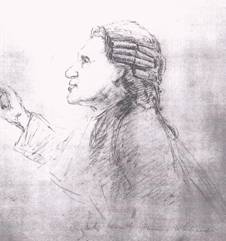
The conversation then turns to oratory and the editor compares Dublin's contemporary orators unfavourably with famous orators of the past, namely James Whiteside, Isaac Butt, Thomas O'Hagan, and John Philpott Curran. These men were all noted orators at the Irish bar and historical figures in 1904. Whiteside and O'Hagan's statues were in the Round Hall of the Four Courts prior to its and their destruction in the Irish Civil War.
JJ O'Molloy responds by citing the speech of Seymour Bushe KC in the Childs murder case. When his name is mentioned the editor confuses him with Charles Kendal Bushe and professor MacHugh alludes to the reason why he was not appointed a judge.
Seymour Bushe was one of the foremost barristers of his day and a great orator. He was the great grandson of Charles Kendall Bushe, Chief Justice of the King's Bench, Ireland from 1822 to 1841. At that time the King's Bench and Common Pleas had a chief justice each, Exchequer a Chief Baron and Chancery a Lord Chancellor. Prior to his judicial career Charles Kendall Bushe was a member of the Irish Parliament for Callan, County Kilkenny, and in a record of the bribes paid for votes to carry the union with England in 1800 the word 'incorruptible' was written across from his name. Seymour Bushe missed judicial appointment because of involvement in an adulterous affair. In a trial held in October 1899, attended by James Joyce, Bushe successfully defended Samuel Childs of the murder of his 76 year old brother at 36 Bengal Terrace, beside Glasnevin cemetery.
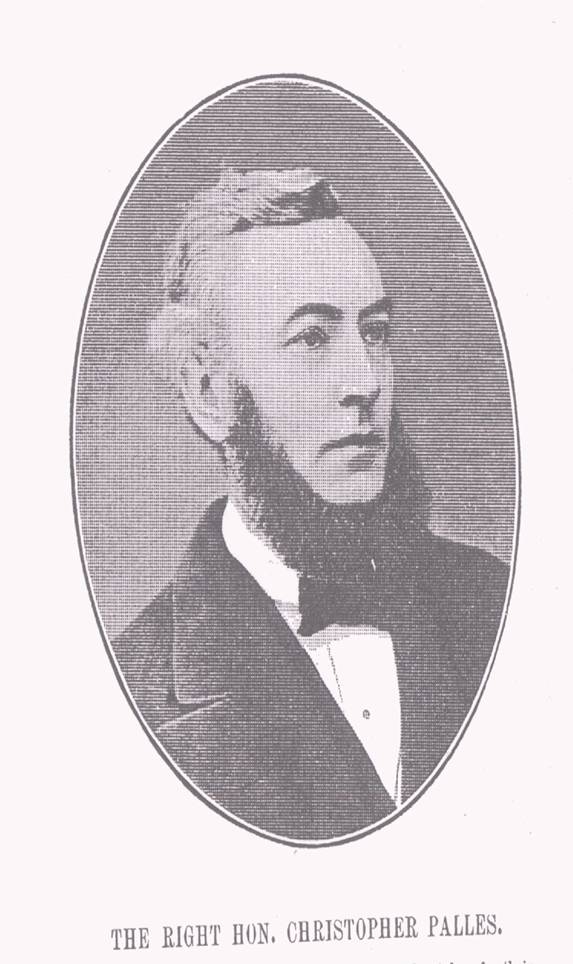
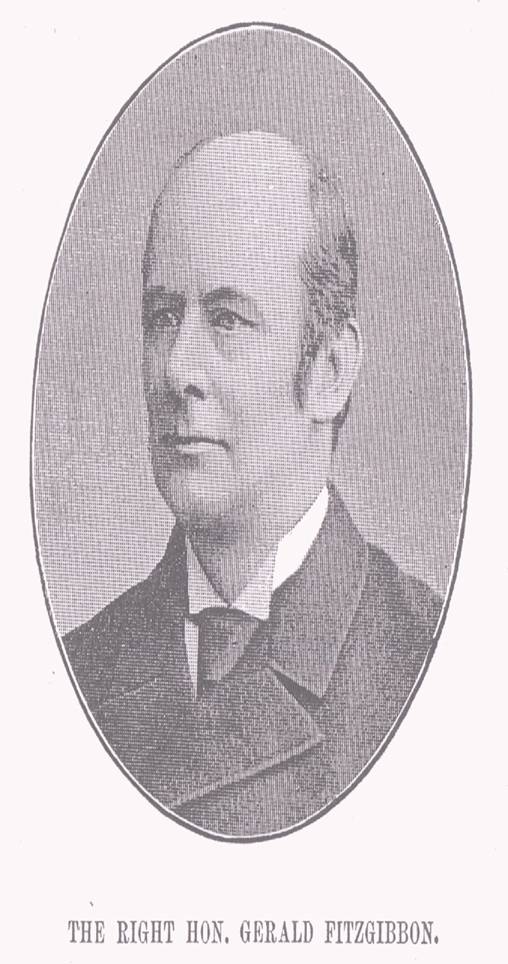 JJ O'Molloy then begins to tell a story about Christopher Palles, chief baron in the Court of Exchequer in 1904, but unfortunately is cut short. The conversation returns to oratory and the company discuss the oratorical styles of, and the debate at the college historical society between, Mr. Justice Fitzgibbon and John F. Taylor on the revival of the Irish language. O'Molloy also mentions that Fitzgibbon is sitting with T.M. Healy on the Trinity college estates commission.
JJ O'Molloy then begins to tell a story about Christopher Palles, chief baron in the Court of Exchequer in 1904, but unfortunately is cut short. The conversation returns to oratory and the company discuss the oratorical styles of, and the debate at the college historical society between, Mr. Justice Fitzgibbon and John F. Taylor on the revival of the Irish language. O'Molloy also mentions that Fitzgibbon is sitting with T.M. Healy on the Trinity college estates commission.
In 1904 Gerald Fitzgibbon was a judge of the Court of Appeal and was described by one commentator as the most distinguished member of the Irish bench and its most effective speaker. His son would go on to be a judge of the Supreme Court of the Irish Free State.
T.M. Healy was a barrister and a senior figure in the Irish Parliamentry Party involved in the fall of Parnell, which earned him rebuke in the 9 year old James Joyce's poem 'Et Tu Healy' of which no copy remains. He assisted Seymour Bushe in the defence in the Child's murder case and it is most likely this case he describes in his memoirs as one where "an old man was found dead in his parlour near Glasnevin cemetery, Dublin, with his skull battered in, and the Crown asserted that his brother committed the murder." Healy states that he believed the accused killed his brother in a moment of passion, having been refused money by him and explains that following his acquital the accused took out probate to his brother's estate and inherited all his means.
John F. Taylor was a king's counsel and renowned orator living at 4 Ely Place in 1904. Taylor made a similar speech to that reported in Ulysses defending the study of the Irish language, at the Law Students' Debating Society on October 24th 1901, which Joyce attended.
In the early afternoon the setting is the National Library of Ireland where Stephen is setting out his theory on Hamlet to others in the Librarian's office. In the course of the conversation John Eglington refers to Judge Barton's search for clues that Shakespeare was Irish and the librarian, just before leaving to deal with a query from Bloom, refers to Mr. Justice Madden's Diary of Master William Silence.
Sir Dunbar Plunkett Barton was a judge of the King's Bench. He was a cousin of Seymour Bushe and wrote a number of studies of Shakespeare. Dodgson Hamilton Madden was also a judge of the King's Bench, his book is an elucidation of Shakespeare using his knowledge of hunting in the West of England.
In the mid-afternoon, while Bloom is browsing in a bookshop, an elderly lady leaves the Four Courts having heard the cases in lunacy of Potterton; the owners of the Lady Cairns v the owners of the barque Mona; and Harvey v Ocean Accident and Guarantee Corporation.
This elderly lady is, perhaps, based on the lady litigants famous in the Irish courts prior to 1919 who, though unable to practise as lawyers, could prosecute cases in which they were concerned.
The Legal Diary for the 16th June listed in lunacy of Potterton to discharge queries and vouch account.
The Lady Cairns case concerned a collision between the two vessels off the Kish Light in March 1904. There was an application in it on the 16th June to fix time and mode of trial and the matter was eventually heard from the 21st June until the 23rd June before the King's Bench when the court, disagreeing with the Board of Trade report, held that the Lady Cairns was to blame for the accident. The action was dismissed with costs and judgement was entered for the defendant on the claim and their counterclaim. The solicitors for the owners of the Lady Cairns were D & T Fitzgerald, a very influential firm in their day. In the scene in the Evening Telegraph it is remarked that they used to brief JJ O'Molloy.
Harvey v. Ocean Accident and Guarantee Corporation involved a Mr. Charles Meade Harvey who purchased life assurance which provided that if he should sustain any bodily injury by accident from an outward, external and visible means or cause, and die solely from the effect thereof, the corporation would pay his personal representatives 1,000 pounds. The unfortunate man's body was found floating in the River Lee. On June 15th, 1904 the appeal of William Harvey, the administrator of the estate, from an order of the King's Bench following a decision against the estate on a special case stated concluded and judgment was reserved. The solicitor for the corporation was Maurice Healy, T.M. Healy's brother.
Later in the episode Cashel Boyle O'Connor Fitzmaurice Tisdall Farrell passes before Mr. Law Smith's house. The barrister Philip H. Law Smith lived at 14 Clare Street in 1904.
Later again in the episode the elderly lady travels down the quays and is about to enter the offices of Reuben J. Dodd, at 34 Ormond Quay Upper in 1904, when she changes her mind and retraces her steps past King's, the law stationers, then at 36 Ormond Quay Upper and smiles credulously at the viceregal cavalcade. The cavalcade had earlier passed and been ignored by Dudley White BL, who Maurice Healy, in his memoirs, described as a clever mimic and who practised from 29 Kildare Street in 1904. The cavalcade would later be spotted by Gerty MacDowell from outside Roger Greene's solicitors whose offices were at 11 Wellington Quay in 1904.
Leaving the bookshop Bloom, pondering where to eat, meets Richie Goulding and they go to the Ormond Hotel. While they are there George Lidwell comes in.
George Lidwell is the solicitor Joyce consulted in his disputes with the publisher of Dubliners and some of the consultations occurred in the Ormond Hotel near his office at 4 Capel Street. Lidwell advised Joyce that, while Dublin's vigilance committee might press for Joyce's prosecution for the language used in the story 'Ivy Day in the Committee Room' the advisors to the Crown would not notice the story.
Bloom then recalls an action for breach of promise to marry and laughter in court at love letters. The Dublin papers of the 16th June 1904 prominently reported the case for breach of promise to marry entitled Delany v Burke, the love letters read out in court and the laughter at them. This cause of action was abolished by the Family Law Act 1981.
After dining Bloom leaves the Ormond Hotel and walks by 12 Ormond Quay Upper noting that it is the address of 24 solicitors, a fact Thom's Directory 1904 confirms.
 At 5 in the afternoon Bloom makes his way to Barney Kiernan's pub on Little Britain Street and joins the company of the citizen, Alf Bergman and others. The citizen wears a row of seastones on his girdle on one of which is graven the iamge of Peter the Packer. Lord Chief Justice Peter O'Brien, nicknamed 'Peter the Packer', made his reputation during the land war as the attorney general who could secure convictions for agrarian offences in parts of the country very hostile to the State by 'packing' the jury. He led the prosecution in the Invincibles murder trial mentioned above and throughout Ulysses. In his memoirs O'Brien acknowledges his nickname, makes no apology for eliminating from the jury those who were prejudiced, as he puts it, and maintains that he should have been called 'The Great Unpacker'. O'Brien was prosecuting counsel in the Maamtrasna murder trial when the apparently innocent William Joyce was convicted and subsequently hanged. The trial was the subject of James Joyce's lecture 'Ireland at the bar' in Trieste in which Joyce used William Joyce as a "symbol of the Irish nation at the bar of public opinion".
At 5 in the afternoon Bloom makes his way to Barney Kiernan's pub on Little Britain Street and joins the company of the citizen, Alf Bergman and others. The citizen wears a row of seastones on his girdle on one of which is graven the iamge of Peter the Packer. Lord Chief Justice Peter O'Brien, nicknamed 'Peter the Packer', made his reputation during the land war as the attorney general who could secure convictions for agrarian offences in parts of the country very hostile to the State by 'packing' the jury. He led the prosecution in the Invincibles murder trial mentioned above and throughout Ulysses. In his memoirs O'Brien acknowledges his nickname, makes no apology for eliminating from the jury those who were prejudiced, as he puts it, and maintains that he should have been called 'The Great Unpacker'. O'Brien was prosecuting counsel in the Maamtrasna murder trial when the apparently innocent William Joyce was convicted and subsequently hanged. The trial was the subject of James Joyce's lecture 'Ireland at the bar' in Trieste in which Joyce used William Joyce as a "symbol of the Irish nation at the bar of public opinion".
JJ O'Molloy and Ned Lambert then enter the pub and O'Molloy is described by the narrator as 'counsel learned in the law', this is the form of words used for a king's counsel. It doesn't sit with O'Molloy's impoverished state and is probably sarcasm on the part of the narrator. The assembled company then discuss the alleged libel of Denis Breen by publication of 'U.p:up.' on a postcard. Breen had travelled with his libel from Collis and Ward to John Henry Menton and is sent as a prank to the sub sheriff's office on 20 Ormond Quay Upper. JJ O'Molloy cites Sandgrove v Hole 2 K.B. 1 [1901] and opines that the words are capable of defaming Breen. Their meaning remains a subject of debate among Joyce scholars. O'Molloy then discusses the Canada Swindle case, first mentioned by him in the Evening Telegraph office, with Ned Lambert and tells him that the accused was remanded.
The Freeman's Journal of the 17th June reported the prosecution of James Wought, his sweetheart and her brother before Mr. Swift KC in the Southern Police Court for obtaining by false pretences one pound from Benjamin Zaretsky and 10 shillings from Henry Crown and defrauding Jacob Cohen of one pound by pretending to be emigration agents who could arrange passage to Canada. Wought had several aliases including Richards, Sparks, Saphero and Charles and Co. Wought was convicted on the 11th July, though his co-accuseds were acquitted, and was sentenced to 12 months imprisonment with hard labour by the Recorder.
Alf Bergman then recalls the threat of the Recorder to imprison Reuben J. for taking a debt collection action and he and Ned Lambert mock the Recorder's gullibility.
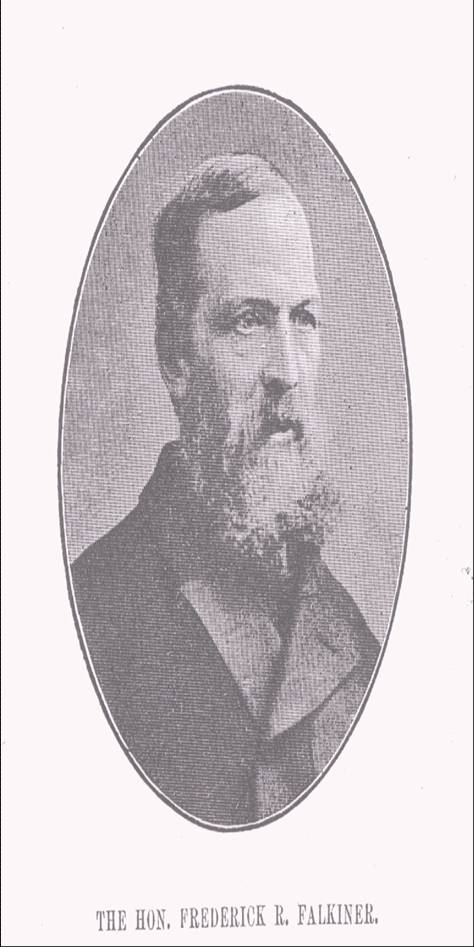
In 1904 Dublin's Recorder was Sir Frederick Falkiner. His court was just around the corner from Barney Kiernan's in Green Street courthouse and it was there James Wought was sentenced to 12 months' hard labour. Sir Frederick was also chairman of the quarter sessions County Dublin, he was known as a poor man's judge and his biography records his reputation for humanity, though the reputation may have been more for gullibility. Dublin, along with other Irish cities of the time, had a Recorder's court. Following independence its jurisdiction was transferred to the Circuit Court by the Courts of Justice Act 1924 and the then Recorder was appointed to the High Court. Joyce appeared before the successor to Frederick Falkiner at the Recorder's Court in 1909 to apply for a licence for 'music only [without dancing] and not at all on Sundays' for his cinema, the Volta, on Mary Street.
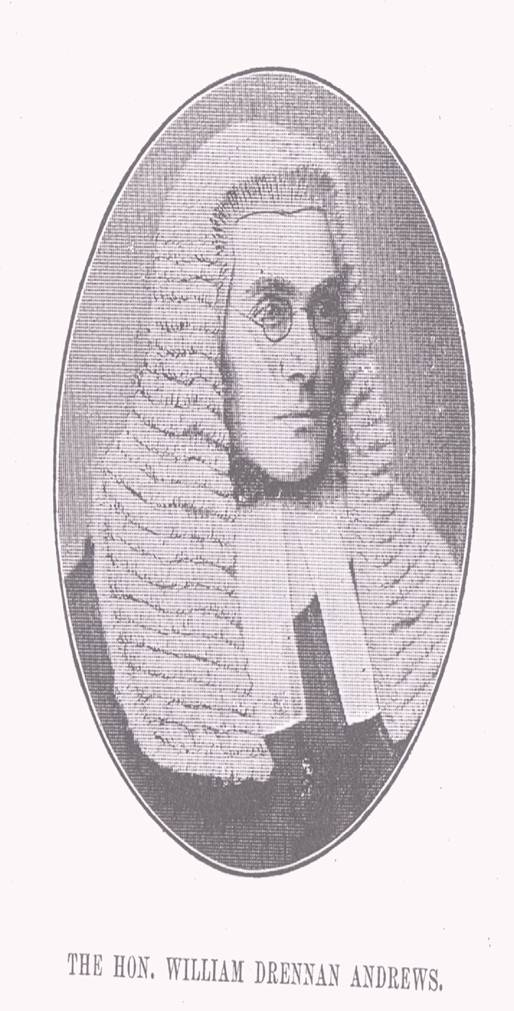
Mention is then made of Arthur Courtenay and a case before Mr. Justice Andrews. Arthur Courtenay was Master of the King's Bench division and William Andrews was a gentle, mild mannered judge of it who was notorious for the severity of the sentences he imposed.
Bloom leaves Barney Kiernan's in haste and, after visiting Paddy Dignam's widow and Sandymount strand, meets up with Stephen Dedalus in Holles Street hospital and they end up in Dublin's notorious red light district of Monto.
The Homecoming
Following an altercation with soldiers in the Monto, Bloom and Stephen walk to the cabman's shelter under the loop line bridge where the Lady Cairns case is one of the many subjects of conversation. En route Bloom warns Stephen of the dangers of the red light district and of winding up in the Bridewell court. The late hour confuses Bloom, firstly he states that Mr. Tobias is the judge in the Bridewell, then corrects himself and refers to the Bridewell judges as old Wall and Malony.
Matthew Tobias was the prosecuting solicitor to the Dublin Metropolitan Police of 4-7 Eustace Street, indeed he prosecuted James Wought. Thomas Wall was chief magistrate of the Dublin Metropolitan Police. And Bloom mistakes Malony for Daniel Mahony, divisional magistrate who heard the above mentioned Invincibles postcard case.
After leaving the cabman's shelter Bloom and Stephen go to Bloom's Eccles Street home where the flowing of water from the taps causes mention of the case taken against South Dublin Guardians for the over consumption of water by Ignatius Rice, solicitor to Dublin Corporation.
Such cases were a common occurrence in then drought stricken Dublin. The Freeman's Journal reports the corporation's case against the guardians as adjourned on June 7th and as settled on the 8th with the guardians agreeing to pay 4d. per gallon of water in excess of their permitted amount.
Bloom then mentions that one of the reasons for his failure to complete a song about the return of Brian Boru was the rhymes associated with names of Daniel Tallon, Thomas Pile and solicitorgeneral Dunbar Plunkett Barton. Barton is the judge referred to in the National Library. The position of solicitor-general, one of the law officers to the crown in Ireland was, despite its title, reserved to king's counsel, and Plunkett was appointed to it in 1898. The business, powers, authorities and functions of the solicitor-general were vested in the attorney general of the Irish Free State by the Ministers and Secretaries Act, 1924.
In the final episode of the novel Molly Bloom, Leopold's wive, recalls how she saw Joe Gallaher with Friery the solicitor in a trap at the trotting matches and was ignored by her. Friery was the coroner for county Dublin in 1904 and his office was at 52 Rutland (now Parnell) Square West. He was the coroner who dealt with the death of Samuel Child's brother. According to Richard Ellmann Christopher Friery actually accompanied a Mrs. Clinch, the sister of Mrs. Gallaher, the Joyce's neighbour in North Richmond Street, in the trap.
Conclusion
We will conclude by speculating on the reasons Joyce chose these people and places of legal Dublin for Ulysses. Seymour Bushe, Mr. Justice Fitzgibbon, John F. Taylor and the other orators of the Irish bar illustrate rhetoric, the art of the Aeolus episode. Judges Barton and Madden are linked to Joyce's references to Irish writers' interpretations of Shakespeare that subverted the dominant English, Victorian interpretation. Peter O'Brien is a pro-British member of the Irish establishment and his inclusion among the Irish heros on the citizen's row of seastones, along with , for example, Shakespeare and Buddha, ridicules the citizen's nationalism. The loss of the Lady Cairns with all hands, the subject of litigation before King's Bench, is discussed in the cabman's shelter, the scene in Ulysses that coincides with that in the Odyssey when the Phaecian ship that brought Odysseus back to Ithaca is turned to stone by Poseidon and sinks with the loss of her crew. The Childs murder case links with Dedalus' theory on the false, usurping or adulterous brothers of Shakespeare. Reuben J., as well as presenting Joyce with an opportunity for revenge, provides, with the Canada Swindle case, an illustration of Dublin's Jewish community and Dubliners' attitudes to it. Reuben J.'s debt collection action before the recorder illustrates, with many other examples, the poverty of the Dublin of Ulysses. And the fact that the solicitor to the corporation, Ignatius Rice, shared a name with the founder of the Christian Brothers, who briefly educated Joyce before he was sent to the Jesuits, a fact he never sought to advertise, probably drew his attention to the case.
Further reading and references:
- Ball, F Ellrington. The Judges in Ireland. London: Murray, 1926
- Ellmann, Richard. James Joyce. New York: Oxford University Press, 1988;
- Dictionary of National Biography. 1911;
- Gifford, Don. Ulysses Annotated: notes for James Joyce's Ulysses, Don Gifford with Robert J. Seidman. Berkeley; London: University of California Press, 1988;
- Healy, Maurice. The Old Munster Circuit a book of memories and traditions by Maurice Healy. Dublin: Browne and Nolan, 1939;
- Healy, T.M. Letters and Leaders of My Day. London: T. Butterworth, 1928;
- Hogan, Daire. The Legal Profession in Ireland 1789 - 1922 by Daire Hogan. Dublin: Incorporated Law Society of Ireland, 1986;
- Joyce, James. Ulysses. Paris: Shakespeare and Company, 1922;
- Marjoribanks, Edward, The Life of Lord Carson by Edward Marjoribanks with a preface by the Rt. Hon. Viscount Hailsham. London: V. Gollancz ltd. 1932 - 1936;
- Nicholson, Robert. The Ulysses Guide: Tours through Joyce's Dublin. Dublin: New Island, 2002.
- O'Brien, Peter. The Reminiscences of the Right Hon. Lord O'Brien (of Kilfenora): LCJ of Ireland as edited by his daughter Hon. Georgina O'Brien. London: E. Arnold, 1916;
- Thom's official directory of the United Kingdom of Great Britain and Ireland, 1904;
Copyright Brian McMahon, 2005. One copy may be made for personal, non commercial use. Contact Brian McMahon at [email protected]

 JJ O'Molloy then begins to tell a story about Christopher Palles, chief baron in the Court of Exchequer in 1904, but unfortunately is cut short. The conversation returns to oratory and the company discuss the oratorical styles of, and the debate at the college historical society between, Mr. Justice Fitzgibbon and John F. Taylor on the revival of the Irish language. O'Molloy also mentions that Fitzgibbon is sitting with T.M. Healy on the Trinity college estates commission.
JJ O'Molloy then begins to tell a story about Christopher Palles, chief baron in the Court of Exchequer in 1904, but unfortunately is cut short. The conversation returns to oratory and the company discuss the oratorical styles of, and the debate at the college historical society between, Mr. Justice Fitzgibbon and John F. Taylor on the revival of the Irish language. O'Molloy also mentions that Fitzgibbon is sitting with T.M. Healy on the Trinity college estates commission.

 At 5 in the afternoon Bloom makes his way to Barney Kiernan's pub on Little Britain Street and joins the company of the citizen, Alf Bergman and others. The citizen wears a row of seastones on his girdle on one of which is graven the iamge of Peter the Packer. Lord Chief Justice Peter O'Brien, nicknamed 'Peter the Packer', made his reputation during the land war as the attorney general who could secure convictions for agrarian offences in parts of the country very hostile to the State by 'packing' the jury. He led the prosecution in the Invincibles murder trial mentioned above and throughout Ulysses. In his memoirs O'Brien acknowledges his nickname, makes no apology for eliminating from the jury those who were prejudiced, as he puts it, and maintains that he should have been called 'The Great Unpacker'. O'Brien was prosecuting counsel in the Maamtrasna murder trial when the apparently innocent William Joyce was convicted and subsequently hanged. The trial was the subject of James Joyce's lecture 'Ireland at the bar' in Trieste in which Joyce used William Joyce as a "symbol of the Irish nation at the bar of public opinion".
At 5 in the afternoon Bloom makes his way to Barney Kiernan's pub on Little Britain Street and joins the company of the citizen, Alf Bergman and others. The citizen wears a row of seastones on his girdle on one of which is graven the iamge of Peter the Packer. Lord Chief Justice Peter O'Brien, nicknamed 'Peter the Packer', made his reputation during the land war as the attorney general who could secure convictions for agrarian offences in parts of the country very hostile to the State by 'packing' the jury. He led the prosecution in the Invincibles murder trial mentioned above and throughout Ulysses. In his memoirs O'Brien acknowledges his nickname, makes no apology for eliminating from the jury those who were prejudiced, as he puts it, and maintains that he should have been called 'The Great Unpacker'. O'Brien was prosecuting counsel in the Maamtrasna murder trial when the apparently innocent William Joyce was convicted and subsequently hanged. The trial was the subject of James Joyce's lecture 'Ireland at the bar' in Trieste in which Joyce used William Joyce as a "symbol of the Irish nation at the bar of public opinion".

